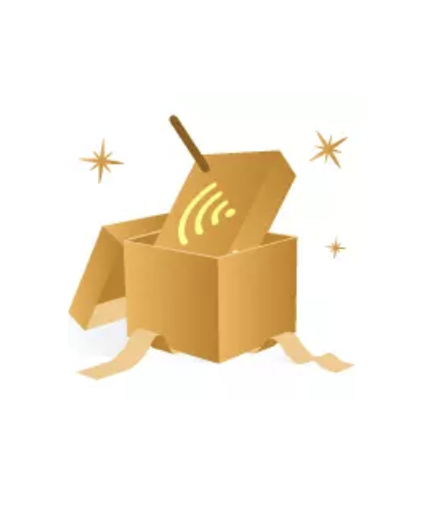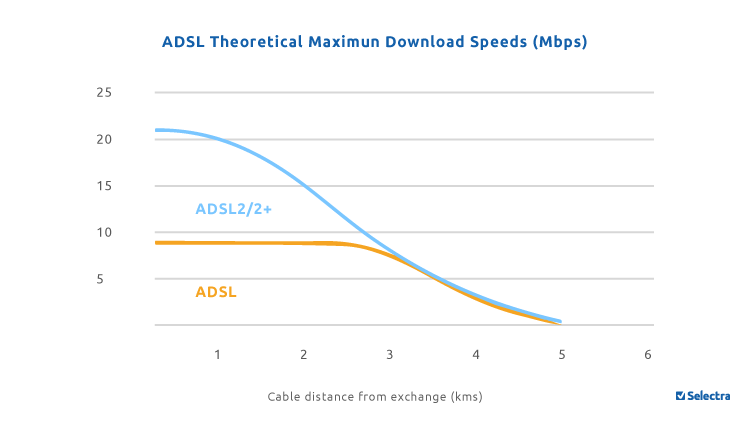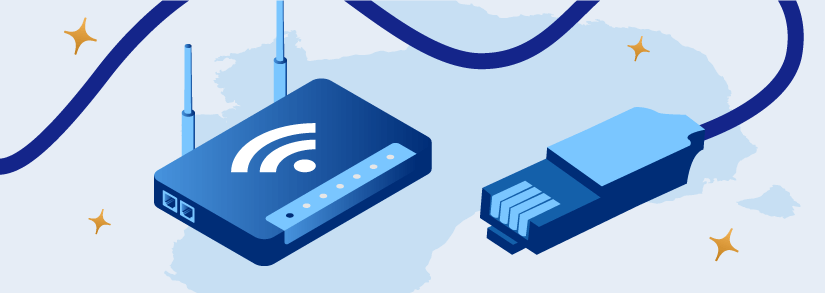DSL, ADSL, and ADSL2: What is ADSL and How Does it Work?
Internet speeds are getting faster and more reliable as technology improves, which is great news for the millions of Australians who have had to deal with slow broadband speeds for years. By now, almost everyone has heard of the National Broadband Network or NBN, which has been rolling out and replacing ADSL connections for the last decade. But what exactly was ADSL and why is the NBN better? To find out more about ADSL technology, keep reading below.
ADSL is no longer available in Australia.
Check out NBN plans or Mobile Broadband for your internet needs.
What Happened to ADSL in Australia?
Is ADSL still available in Australia?
ADSL is not available and has been replaced by the National Broadband Network (NBN), which provides faster and more reliable broadband technologies like fibre, fixed wireless, and satellite.
Why is ADSL being phased out?
ADSL uses older copper telephone lines that offer slower, less reliable internet compared to fibre-optic and wireless technologies that form the backbone of the NBN network.
What is replacing ADSL in Australia?
The NBN is replacing ADSL with a variety of newer technologies including Fibre to the Premises (FTTP), Fibre to the Node (FTTN), fixed wireless, and satellite broadband.
Can I still connect to the internet if I only have ADSL?
While ADSL connections still technically work in some places, many providers are encouraging customers to upgrade to NBN or other faster broadband services, and eventually ADSL services may be disconnected as part of the nationwide transition.
What should I do if I have an ADSL connection?
It is recommended to check NBN availability at your address and consider upgrading your service for better speed and reliability. Some regional and rural areas may still rely on alternative broadband options like fixed wireless or satellite.
Are there coverage limitations with NBN compared to ADSL?
NBN coverage is extensive, reaching over 97% of Australian homes with ongoing rollout. Some regional or remote areas where NBN fixed-line is not yet available use fixed wireless or satellite as alternatives to ADSL.
What are DSL, ADSL, and ADSL2?
DSL, ADSL, and ADSL2 are older broadband technologies used in Australia, which utilized the copper telephone wires to deliver the internet to homes across the country. Since the rollout of the National Broadband Network began in 2007, traditional DSL broadband has slowly become obsolete.
DSL (also known as Digital Subscriber Line) is the generic term used to categorize services delivered over copper wire (such as broadband). ADSL is a type of DSL known as Asymmetric Digital Subscriber Line, which simply means that service speed (download and upload speeds) will not be the same in both directions as the assumption is most people are downloading more content than they upload. ADSL was once the popular choice in home internet connections, with the faster ADSL2 replacing it for better and more consistent download speeds.
The NBN and copper wires The National Broadband Network still utilizes some of the copper telephone wires for certain types of connections. However, as the NBN has now been rolled out across the country, older connection types that use copper wire are being replaced with fibre-optic cables for even more reliable broadband connection and speeds, known as Fibre-to-the-Premise (FTTP). If you have an FTTP connection, you can potentially reach download speeds of 250Mbps or more.
How Does ADSL Work?
ADSL is what we call the type of broadband connection that works through the existing copper wires of your phone line, connecting from your home to what is known as an Exchange. Almost every home had, and most still have, a landline connection which made ADSL a relatively straightforward way to connect homes and businesses to the internet.
Many of us remember the old days of dial-up, when we had to make sure no one was using the phone before going online. ADSL solved this problem by using a DSL filter, also known as a splitter, to isolate frequencies and allow one telephone line to be used for both broadband and home phone services without interference.

Looking for a New Internet Plan for Your Home?
Selectra Can Provide Advice & Help You Find The Best Plan

Looking for a New Internet Plan for Your Home?
Selectra Can Provide Advice & Help You Find The Best Plan
ADSL Speeds - How Fast is ADSL?
ADSL when compared to dial-up was, at one point, light years ahead in terms of download speed. However that has since changed, and with ADSL replaced first by a faster ADSL2+, and now an even faster NBN and hybrid-fibre coaxial connections, ADSL speeds are less than impressive by 2021 standards.
| Broadband Connection Type | Max Download Speed |
|---|---|
| Dial | 63kbps |
| ADSL | 8Mbps |
| ADSL2 | 24Mbps |
| NBN | 12Mbps to 250+Mbps (Max download speeds vary depending on NBN speed tier) |
When looking at ADSL speeds, it’s important to remember the most important factor - distance. How far away your connection is from the exchange will directly affect how fast or slow your ADSL is. As the broadband signal travels from the exchange to your modem, it suffers attenuation (loss), therefore reducing your broadband speed.

What Replaced ADSL? NBN vs ADSL
The National Broadband Network, or NBN, is Australia’s effort to expand and improve the broadband infrastructure of the country. Since it was first announced in 2009, the NBN has been replacing the traditional ADSL infrastructure and copper telephone wires with high-speed fibre-optic cables.
The biggest difference between ADSL and NBN is your download speeds, and more specifically the range of speed tiers you can choose from. Traditional ADSL only has a maximum download speed of 8Mbps, while faster ADSL2+ has max download speeds up to 24Mbps. The NBN, on the other hand, has speed tiers starting at 12Mbps.
| NBN Speed Tiers | NBN Speed Description |
|---|---|
| NBN12 Basic | 1-2 low-internet users, light web browsing, and emails |
| NBN25 Standard or Basic II | 1-3 average internet users, stream standard quality videos, and browse the internet |
| NBN50 Standard Plus | 2-4 users, online gaming, video streaming, high internet usage |
| NBN100 Premium | Large households, HD online gaming, multiple devices, high quality video streaming |
| NBN250 & NBN1000 Superfast & Ultrafast | The fastest NBN plans available. Only for Fibre-to-the-building connections |
With the ever-expanding use of the internet, and more powerful technology that comes with it, these faster broadband speeds are becoming increasingly necessary to work from home, game online, stream better quality videos, and keep in touch with friends and family far away.

Looking for Broadband & Mobile Deals?
See exclusive online offers from Southern Phone! Compare NBN plans and providers.
How Do I Switch From ADSL to NBN?
Switching to the NBN from ADSL isn’t automatic. Once NBN is available in your area you have 18 months from the date of connection to switch over. After 18 months, your ADSL broadband and phone line will be disconnected.
It’s easy to switch to an NBN plan, however. Most NBN retailers offer flexible plan options, so you can make sure you’re getting the best broadband option for your household. Some things to consider when switching from ADSL to NBN are:
Speed: As stated, NBN plans are divided into different speed tiers and faster speed tiers coming with a higher monthly cost. It doesn’t make sense to pay for a broadband speed that is unnecessarily fast, while likewise you don’t want to suffer slow internet speeds because of a plan that was too slow.
Data: Most NBN plans come with unlimited data, but if you’re someone who doesn’t use the internet often it might make sense to consider a capped data NBN plan. It should be noted, however, that these days there really isn’t a price difference between capped and uncapped data plans.
Contract type: Do you want a month-to-month contract, or a 12-month contract. While month-to-month contracts give you the flexibility to switch providers, they often come with more upfront costs such as activation fees or the cost of a modem. 12-month NBN plans often offer $0 activation, and free modems, in exchange for staying with them for a year.
Do I Need to Switch to The NBN?
Technically, yes and no. While switching to the NBN is not compulsory, you can’t stay on ADSL forever. This is because of what is known as your NBN cut-off date. All homes in Australia are getting connected to the NBN, and once your area is connected you will have 18 months from the date of connection to switch to your chosen NBN plan. After those 18 months are up, your traditional home phone and internet services will be disconnected.
However, you don’t technically need to connect to the NBN. It isn’t mandatory - there just aren’t many other alternatives to choose from. If you’re dead set against the NBN, home wireless broadband allows you to connect the devices in your home to the internet using the 4G (and, more recently 5G) mobile network.
Click below to find a better deal for your home!




